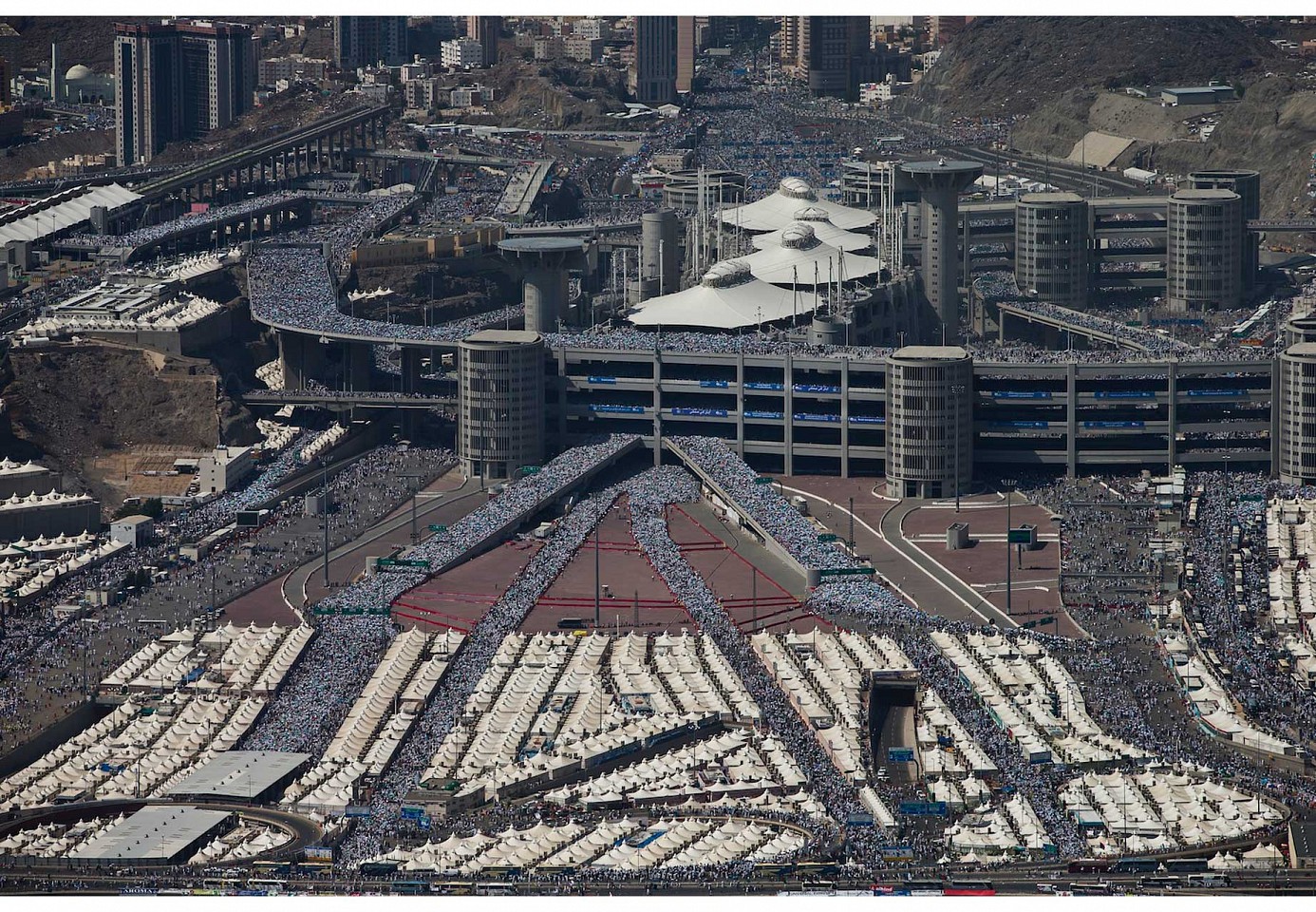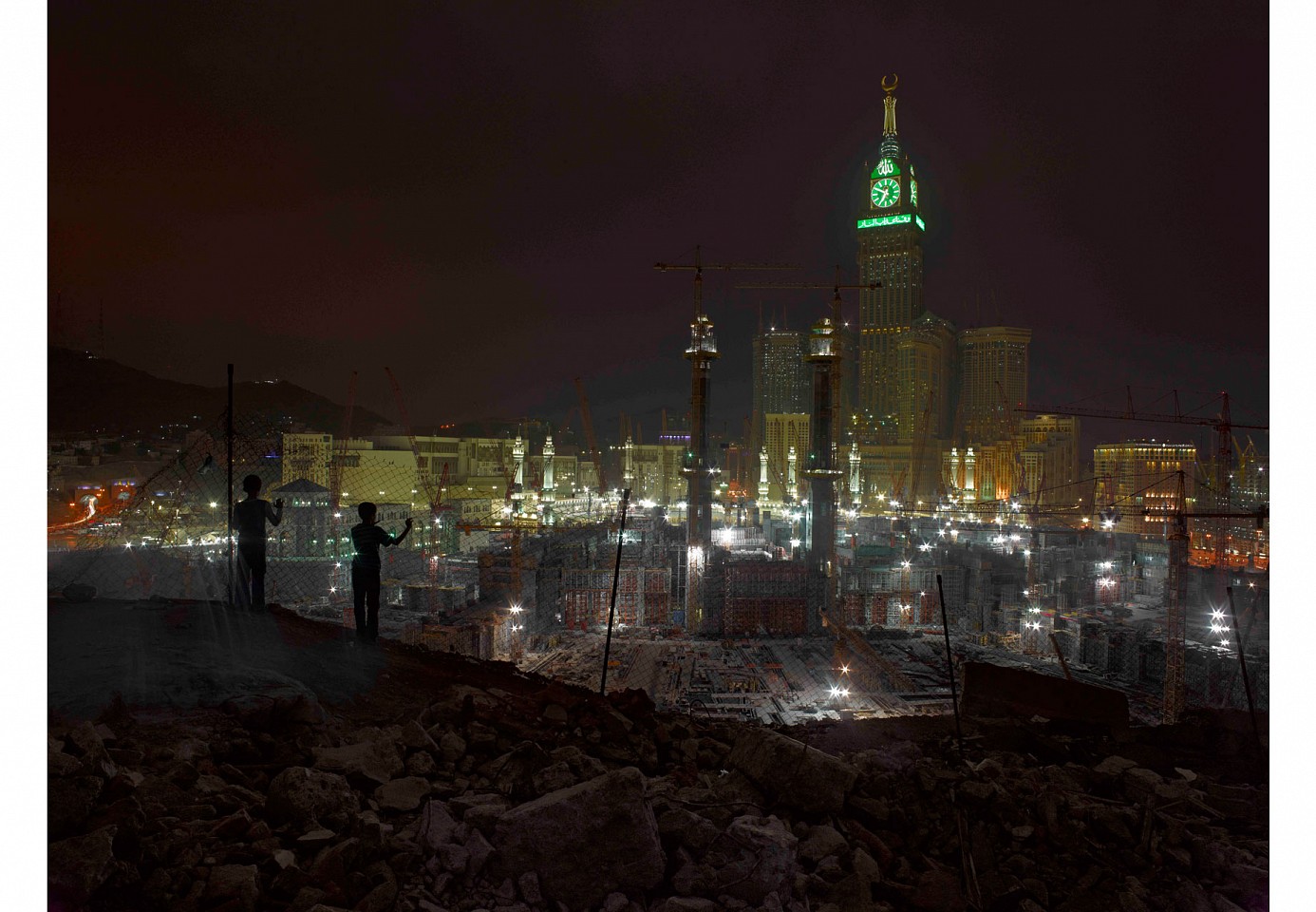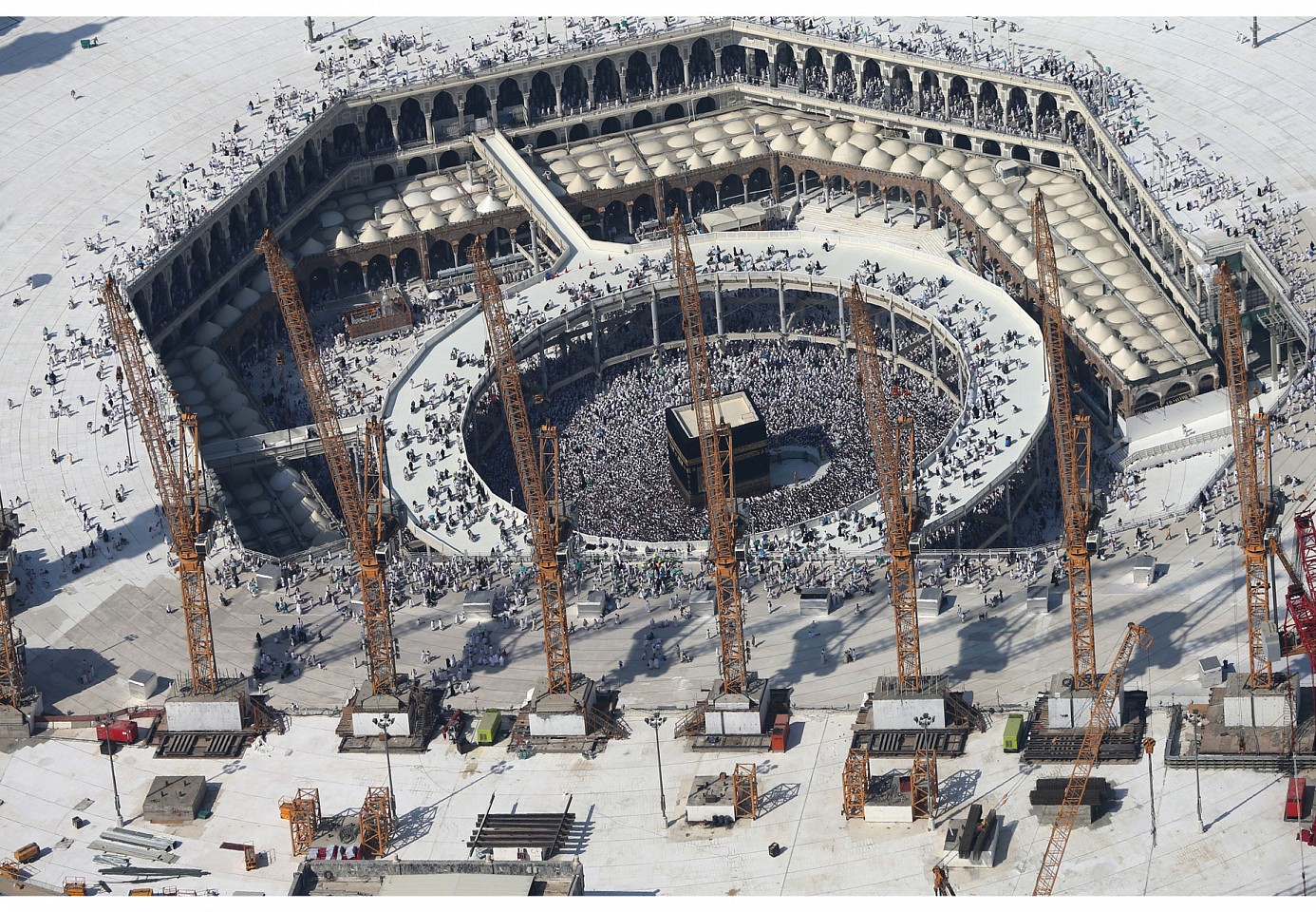Ahmed Mater
Human Highway (Mina), 2012
Laserchrome print on KODAK real photopaper
140 x 200 cm (55 1/8 x 78 3/4 in.)
AHM0067
Ahmed Mater
Let it Be Passed, 2012
Fineart Latex printer and matt 200g unbleached printing paper
145 x 200 cm (57 1/16 x 78 11/16 in.)
Edition of 5; From Desert of Pharan series
AHM0215
Ahmed Mater
Untitled, 2012
Fineart Latex printer and matt 200g unbleached printing paper
145 x 200 cm (57 1/16 x 78 11/16 in.)
Edition of 5; From Desert of Pharan series
AHM0220



Every year, five million tourists visit Bruges. What if they all decided to stay? What if a small, preserved, historic city should suddenly become a megapolis? This is the premise for the Bruges Contemporary Art and Architecture Triennial 2015.
This scenario opens up a plethora of possibilities and challenges. Would a small city be capable of coping with the dynamics of a metropolis? And conversely: could a city on a human scale contribute to a new, better form of urbanism?
Eighteen international artists went to work on this idea. They created new works
on this idea. They created new works that can be viewed on an art trail through the centre of Bruges. The artists pose questions and reflect on the future and potential of the city, of urbanisation, citizenship, lifestyle, community, economics
that can be viewed on an art trail through the centre of Bruges. The artists pose questions and reflect on the future and potential of the city, of urbanisation, citizenship, lifestyle, community, economics , energy, space, sound and the values that guide us.
, energy, space, sound and the values that guide us.
Bruges, with its UNESCO World Heritage-listed centre, is extremely conservative in its approach to its heritage. It can seem as though time has stood still. The Unfinished Cities exhibition, on the other hand, shows cities in the Middle East and Far East undergoing a constant state of flux. Urban development, propertySPECULATION , destruction and reconstruction after conflict have left these cities balanced on the border between ruin and building site.
, destruction and reconstruction after conflict have left these cities balanced on the border between ruin and building site.
A photographic series by the Saudi photographer Ahmed Mater follows the transformation of the holy city of Mecca into a modern, commercial place. The Saudi artist Sami Al Turki uses dreamy images of buildings that float over empty landscapes to allude to the unaffordable cost of land.







